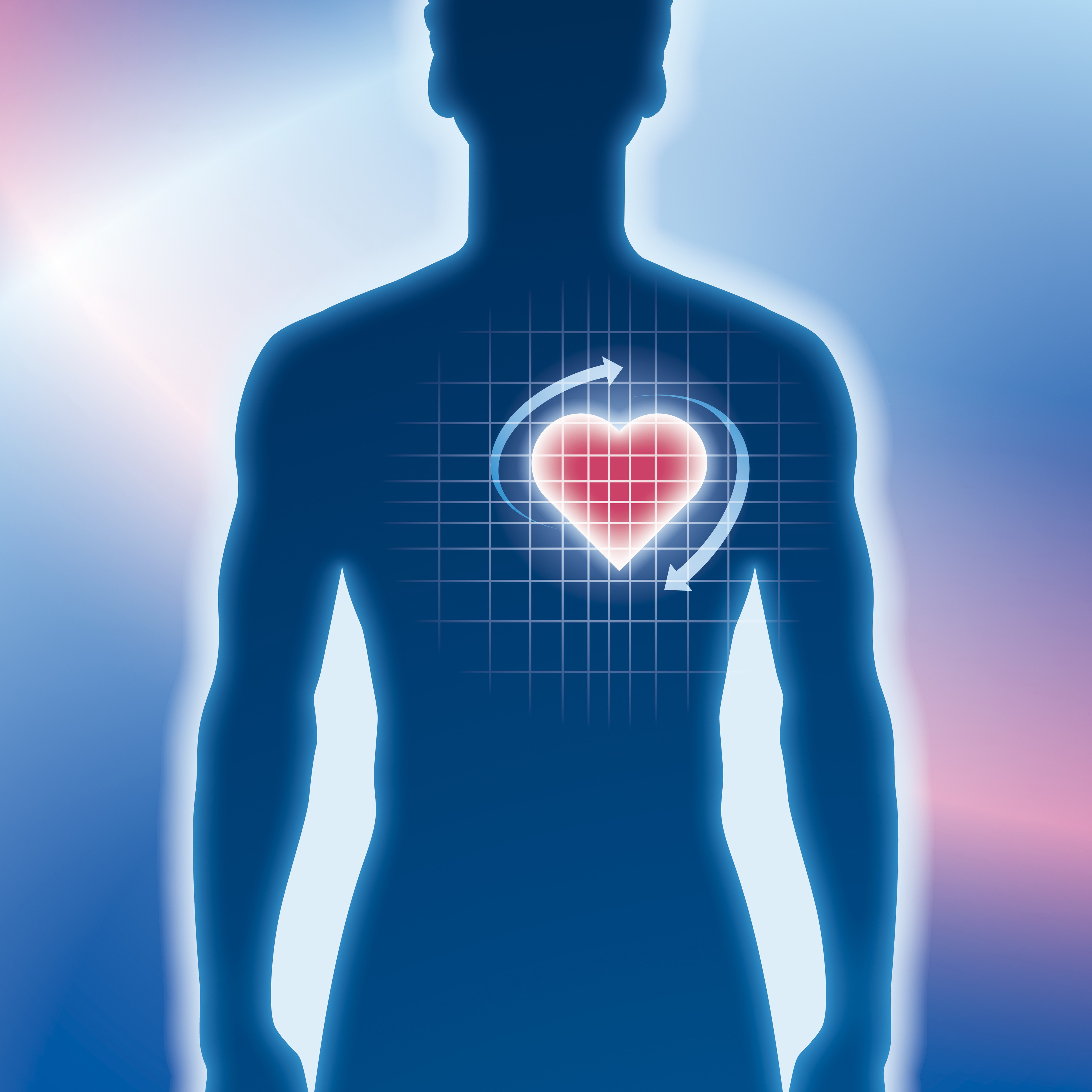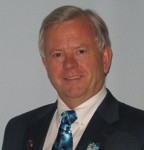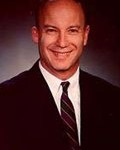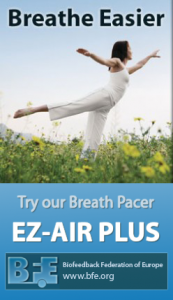Heart Rate Variability (HRV)
Overview
The autonomic nerv ous system regulates various physiological systems of the human body, including heart rate variability. Heart rate variability (HRV) describes the oscillations in timing of consecutive heart beats as well as the variations between consecutive heart rates. Changes in HRV can be examined under various conditions (when asleep, awake, during physical exertion, relaxed, or under pathological condition) as indication of overall autonomic nervous system efficiency, and therefore an indicator of general health. Higher HRV levels are correlated to adaptability and positive indications of health, whereas lower HRV suggests insufficient adaptation and negative indications of health. Research into respiration and heart rate to maximize heart rate variability has been a major focal point in biofeedback for several decades. Heart rate variability is a prevalent feature in biofeedback therapy for health, relaxation and optimal performance. Most clinicians that assess and teach self-regulation skills begin with respiration and heart rate, either with electrocardiogram (EKG/ECG) or blood volume pulse (BVP) measurements. As studies has delved deeper into meaning and controls of heart rate variability, newer statistical measures and interpretations of well-being have emerged with time. Where the field of old would discuss parasympathetic & sympathetic control, new published papers and clinical opinions focus on polyvagal theory and resonant frequency detection. It is truly a fascinating and exciting time for heart rate variability biofeedback.
ous system regulates various physiological systems of the human body, including heart rate variability. Heart rate variability (HRV) describes the oscillations in timing of consecutive heart beats as well as the variations between consecutive heart rates. Changes in HRV can be examined under various conditions (when asleep, awake, during physical exertion, relaxed, or under pathological condition) as indication of overall autonomic nervous system efficiency, and therefore an indicator of general health. Higher HRV levels are correlated to adaptability and positive indications of health, whereas lower HRV suggests insufficient adaptation and negative indications of health. Research into respiration and heart rate to maximize heart rate variability has been a major focal point in biofeedback for several decades. Heart rate variability is a prevalent feature in biofeedback therapy for health, relaxation and optimal performance. Most clinicians that assess and teach self-regulation skills begin with respiration and heart rate, either with electrocardiogram (EKG/ECG) or blood volume pulse (BVP) measurements. As studies has delved deeper into meaning and controls of heart rate variability, newer statistical measures and interpretations of well-being have emerged with time. Where the field of old would discuss parasympathetic & sympathetic control, new published papers and clinical opinions focus on polyvagal theory and resonant frequency detection. It is truly a fascinating and exciting time for heart rate variability biofeedback.
Team Leaders
The BFE is privileged to work with a wide number of clinicians that examine and incorporate heart rate variability measurements into their practices or methods in a variety of manners. We do not possibly have room to introduce all these individuals, so we will instead redirect our attention to two primary clinical leaders in the fields, whom can be described as researchers, therapists and trainers all in one.
 Donald Moss, Ph.D., is adjunct graduate faculty in Health Psychology at Saybrook Graduate School in San Francisco, and a partner in three outpatient behavioral health clinics in western Michigan. He is Editor of the Biofeedback Magazine, Associate Editor for Applied Psychophysiology and Biofeedback, and Consulting Editor for the Journal of Neurotherapy and the Journal of Phenomenological Psychology. Dr. Moss has over 50 publications in the fields of psychophysiology, biofeedback, and mind-body therapies, including the Handbook of Mind-Body Medicine for Primary Care, Sage, 2003).
Donald Moss, Ph.D., is adjunct graduate faculty in Health Psychology at Saybrook Graduate School in San Francisco, and a partner in three outpatient behavioral health clinics in western Michigan. He is Editor of the Biofeedback Magazine, Associate Editor for Applied Psychophysiology and Biofeedback, and Consulting Editor for the Journal of Neurotherapy and the Journal of Phenomenological Psychology. Dr. Moss has over 50 publications in the fields of psychophysiology, biofeedback, and mind-body therapies, including the Handbook of Mind-Body Medicine for Primary Care, Sage, 2003).
 Fred Shaffer, Ph.D., is Professor of Psychology at Truman State University and founder of an innovative biofeedback and applied psychophysiology program in 1977. He was a 2005 recipient of the AAPB Sheila Adler Distinguished Service Award. He is the producer and author of Biofeedback Tutor, a multimedia training program developed for the BCIA General Examination in Biofeedback. His research interests focus on heart rate variability and respiratory self-regulation.
Fred Shaffer, Ph.D., is Professor of Psychology at Truman State University and founder of an innovative biofeedback and applied psychophysiology program in 1977. He was a 2005 recipient of the AAPB Sheila Adler Distinguished Service Award. He is the producer and author of Biofeedback Tutor, a multimedia training program developed for the BCIA General Examination in Biofeedback. His research interests focus on heart rate variability and respiratory self-regulation.
Education
The BFE offers a wide variety of educational content, presented by a variety of clinical leaders and therapists. Feel free to explore the different types of live online or recorded presentations that discuss respiration, heart rate and heart rate variability. Below is a small selection of available content. For a more complete listing, click here.
HRV Training Online Class or HRV Training Online Class Recording: learn all about the latest HRV theory and how to run a training session in this live, interactive online class or by watching the session recordings.
HRV Clinical Manual: this PDF document describes and answers questions regarding heart rate variability, the anatomical original, as well as assessment and training strategies.
HRV & Hypnosis for Trauma Webinar Recording: learn how HRV and hypnosis can be used with clients to heal trauma.
Tactical Breathing and Heart Rate Variability Webinar Recordings: Henk Kraaijenhof, Ph.D., discusses tactical breathing and heart rate variability for performance under pressure – breath control and HRV for military, security and law enforcement personnel. These are two separate webinar recordings.
Irritable Bowel Syndrome and Biofeedback Webinar Recording: Dr. Richard Gevirtz describes irritable bowel syndrome (IBS) from a psychophysiological perspective and explains how an HRV protocol can help.
Treating PTSD with Biofeedback & Neurofeedback Webinar Recording: Dr. Russoniello, Ph.D. describes how he uses biofeedback and neurofeedback in his program for Wounded Warrior Marines at Camp Lejeune.
Software
The BFE offers a collection of software applications, which focus solely or incorporate heart rate variability measurement as a component to a greater method.
Heart Rate Variability Suite by Drs. Donald Moss and Fred Schaffer
The primary aim of this software suite is the assessment of a subject’s breathing, heart rate and heart rate variability, as well as to provide simple, step-wise training method for increasing the individual’s heart rate variability. A variety of training options are available, regarding whether the supervising therapist prefers open sessions or fixed exercises in within protocols. This suite designed by Dr. Moss and Dr. Schaffer, includes the HRV clinical manual for understanding pertinent HRV research and training strategies.
Optimizing Performance and Health, by Dr. Vietta (Sue) Wilson
This software suite is designed for optimal performance training with athletes, executives and other peak performers who want to enhance their performance. Breath and heart rate variability training is an integral component of this methodology, which also includes other biofeedback and neurofeedback measures. It is a general method applicable to all sports that goes from initial intake and assessment all the way through to training.
Setting Up for Clinical Success and Specialized Application Scripts by Dr. Lynda and Michael Thompson
From two of the top leaders in the field biofeedback and neurofeedback, their methodology developed and applied at their ADD Centre in Toronto, was packaged into these two software suites. The software is primarily applicable for neurofeedback treatment of a wide variety of disorders, however respiration and heart rate variability training is also included as a component.
Biofeedback Basics by Dr. Erik Peper
This introductory software suite is excellent for professionals entering the field of biofeedback or as pedagogical tools for students. It was built specifically to be a companion to the Biofeedback Mastery book by Erik Peper, Ph.D. Its focus is on all the general biofeedback modalities, of which respiration, heart rate and heart rate variability is included.
ProGolf Suite, by Jane Arave, Dr. Wes Sime and Dr. Harry van der Lei
Therapists, clinicians or trainers look for an optimal performance tool to use with golfers will find this software suite to be of interest. Breath and heart rate variability training is an integral component of this methodology, which also includes other biofeedback and neurofeedback measures.
ProBaseball Suite, by Jane Arave, Dr. Wes Sime and Dr. Benjamin Strack
Therapists, clinicians or trainers look for an optimal performance tool to use with baseball players will find this software suite to be of interest. Breath and heart rate variability training is an integral component of this methodology, which also includes other biofeedback, neurofeedback and reaction time measures.
Integrative Medicine, by Dr. Robert E. McCarthy
The biofeedback and neurofeedback assessment and training techniques presented in this software package as taken from an integrative medicine approach to health. Included in the assessment and training protocols, for use on a general treatment population, are heart rate, breathing and heart rate variability components. A collection of suite documents are also included, for clinicians to use to start their very own state-of-the-art integrative medicine practice
Military, Security & Law Enforcement, by Dr. Henk Kraaijenhof & Yuval Oded
This software suite is designed for optimal performance training with military, security and law enforecement personnel. Individuals in these fields undergo specific, intense and emotional forms of stress, to which the software’s context takes into account. One component of this software is the assessment and training of respiration and heart rate variability.
Tennis Performance, by Stephanie Nihon
Designed for use with tennis athletes that require biofeedback and neurofeedback training, this software suite is based on the Ms. Nihon’s training style and experience with tennis players, as well as the guidance imparted from working closely for several years with Dr. Vietta (Sue) Wilson and the Dr. Michael Thompson. The training displays and exercises, which included focuses on respiration and heart rate variability, emphasize self-regulation and peak performance mental skills.








